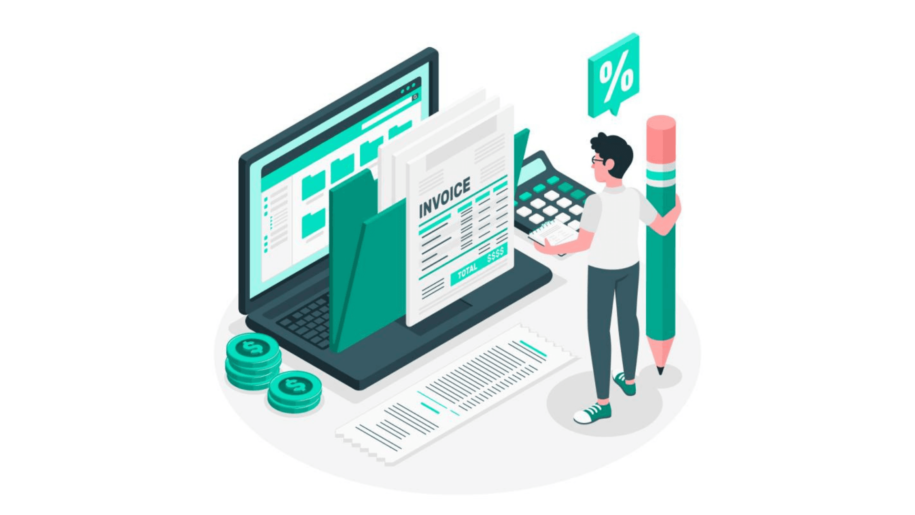Creating a solid cash flow for your business relies on optimizing how money comes in and goes out. You send out invoices, and ideally, people pay you the total amount without becoming past due. You place orders and pay on time, as well. In other words, your accounts receivable and accounts payable flow flawlessly. It’s the way the business/customer relationship is supposed to go. Of course, no system is perfect, and it’s rarely that smooth. Bring in an accounts receivable aging report.
The Importance of AR Aging Reports

An accounts receivable aging report, or receivable report, summarizes the amount due from your customers. The report features a detailed aging schedule that shows all overdue payments ordered by the due date to see which outstanding invoices have yet to be paid. Date ranges for aging reports tend to be in 30-day increments.
Accounts receivable aging reports are a great way to identify cash flow problems. Perhaps your business is too lenient with its credit policies and lets customers submit late payments far after they should have paid.
Your company may be lax on following up with unpaid invoices, and customers forget about their account responsibilities because of the lack of contact.
Healthy cash flow relies on fair credit terms, a limited number of days before dunning letters and payment reminders are sent, and close monitoring of customer accounts. Business owners may be too busy to closely watch the bookkeeping process, but that doesn’t mean avoiding establishing proper procedures and checking the results.
An AR aging report is the thermometer that shows your company’s financial health, and it’s one of the best ways to take your business’s temperature.

What’s in an Accounts Receivable Aging Report?
A typical AR aging report shows the following columns:
Client or Customer name
This column shows who owes you money.
Current
The current column represents money you are owed, but that is not past due. If you have good payment terms that your customers abide by, this will be where the majority (or better yet, all) of the money detailed in your AR aging report will be.
Date Ranges
Depending on how detailed you want your AR aging report to be, you can include single or multiple date ranges. For example, you could have three columns for outstanding balances due within the last 30 days, 30 to 60 days, and 60 to 90 days.
Total
This column gives the total amount each customer owes for the entire reporting period. Along the bottom of the report, the total owed for each period will be calculated as well. On the bottom right will be the total amount for all customers in the entire reporting period.

Fixing the Collection Process
Once you’ve created your AR aging report, it’s time to analyze what the report says about the health of your large or small business. Yes, even large, well-established companies can have cash flow problems.
Track Doubtful Accounts
When you’re unsure if a customer will pay, they will get classified as a doubtful account. Doubtful accounts or doubtful debt may turn into bad debt in the future, but classifying them as doubtful isolates them from the rest of your accounts receivable so you don’t end up having a credit problem.
The way to deal with doubtful debt is to create an allowance, which is a contra account that gets listed on your balance sheet and counts against your total accounts receivable. In other words, it’s an estimate as to how much of your accounts receivable total you expect to collect.
Healthy cash flow relies on having a high value of amounts of accounts receivable, which can sound contradictory because accounts receivable represents money you don’t have yet.
The difference is that accounts receivable is money you should expect to collect, and your aging report can separate your customers who pay on time from ones who don’t. Companies need to identify which of their customers are credit risks and which can be relied upon for payment so they can look deeper at the overall value of outstanding invoices.
Expand Invoice Information
You can’t measure what you don’t track. Your company’s financial statements rely on accurate dates and quick payment, and one way to encourage them is by putting information on invoices that communicate with the customer. Customer invoices need to have:
- Invoice dates, so purchasers know when you sent it
- Payment terms that outline what happens if there’s a late payment
- Total amount due
- Invoice numbers for easy tracking in accounting software
- Customer name
- Company name
Providing this information on customer invoices is essential for setting up expectations with the customer and simplifies filing and accessing these documents for future use, such as sending payment reminders or during an audit.

Use Accounting Software
You can solve many cash flow problems by using accounting software, such as QuickBooks. Most software has templates for accounts receivable aging reports and can fill in the fields automatically by accessing your customer database.
Even using Excel templates simplifies AR aging report creation thanks to Excel’s ability to perform functions like adding or subtracting certain arrangements of cells.
Accounting software can also automatically send payment reminders to customers. Rather than relying on employees remembering to send a dunning letter or reminder to a customer, the software can either remind the employee to do so or use a standard form that fills in customer information on its own.
Change Payment Terms or Credit Policies
No one wants to be the “bad guy,” having to call a customer and demand payment, but having policies that are too generous can critically impact the financial health of a company. You might even have a great track record of collecting payment in full, but it might take 90 days to do it!
Payment in full and on time is the goal. You may need to shorten the acceptable payment window before customers incur late fees. You may need to experiment w/ different messaging sequences from email, phone call, and text. It’s important to continually refine your collections strategy until it is a well-oiled machine for your business.
The tough part is remembering that the goal is not to be nice but to ensure that you and your fellow employees can meet payroll. If customers are receiving a product or service, they should be expected to compensate your company accordingly.

Use a Collection Agency
Collection agencies don’t mind being the “bad guy.” Suppose that you find that you have a few clients on your accounts receivable aging report that you have contacted in every possible way over months and still haven’t gotten a response.
In that case, you may need to write them off and turn them over to a collection agency. They’re a necessary part of collection functions for many businesses, and they do get results. Typically they will take a percentage of what they are able to collect. In most cases, it’s well worth it when you have a customer that gets to that bad of a stage.
Transform Accounts Receivable with HappyAR

HappyAR is a seamless SaaS that quickly and easily boosts your accounts receivables work. We save companies of all sizes thousands of dollars each year by optimizing the speed and efficiency of their collections methods. No more guessing if someone has received an invoice or trusting that it will be paid on time. This is a fully integrated solution that pays for itself over and over each month by preventing defaults and preserving client relationships.

